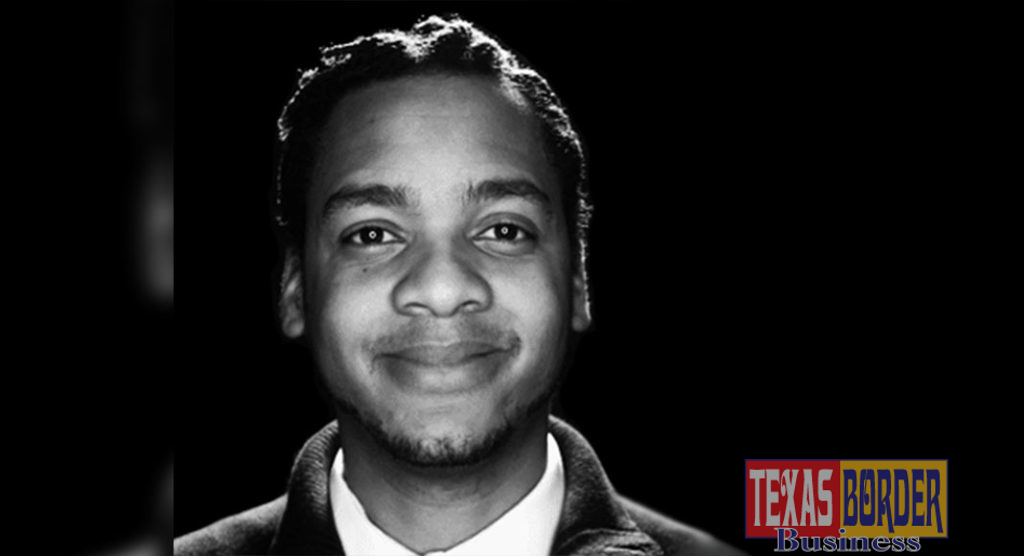ROADRUNNERS YOU SHOULD KNOW

Texas Border Business
When the COVID-19 pandemic sent everyone home, the struggle was real for physical education teachers, coaches, and student-athletes. Seasons were canceled or postponed. Practices were canceled or dramatically modified. Both athletic coaches and P.E. educators suddenly had to adapt physical activities for the virtual environment while many student-athletes eagerly embraced new identities and causes.
The athletics world at large has been especially vocal in recent weeks as protests have erupted after the deaths of George Floyd, Ahmaud Arbery and Breonna Taylor.
Assistant professor Langston Clark of the Department of Kinesiology has the educational background to discuss all these topics. Clark is a physical education teacher educator and an affiliate with the African American Studies Program who studies the intersection of athletics, race, and education. His research has been published by Research Quarterly for Exercise and Sport, Journal of Black Psychology, Journal of Teaching in Physical Education, The Journal of Negro Education, Quest, and The Teacher Educator.
Of all the classes in a K–12 curriculum, physical education is one of the most difficult to translate to a virtual environment. How has physical education changed since the spread of COVID-19?
I think P.E. teachers were using the technological resources available to them. I know a former master’s student who’s teaching for a charter school system. They were putting physical activity lessons and workouts on Facebook Live or other easily accessible platforms to provide students with activities they can do in their backyards or homes. If I had to guess, I’d say that’s not ideal.
In turn, how has P.E. teacher education changed to accommodate distance learning?
There are debates in my field about the viability of doing online P.E. classes. I don’t know if that’s something we can fully embrace because so much of what physical education should be is rooted in the three domains of learning—the psychomotor, the cognitive and the affective, which is about social interaction and development.
When it’s done well in a K–12 setting, physical education provides the opportunity for children to be social with each other in an era when people are increasingly attached to their screens. Physical education and recess are the only times when children get to exercise their social muscles in ways they don’t in other learning settings.
Now that parents have to deal with their kids’ being inside, I can envision a world where physical education becomes more respected because people see the need for children to be outside and be active.
An increasing number of high schools, middle schools, and their communities are making preparations to resume sports if they haven’t already. But those sports teams only serve a small percentage of the students in those schools. Do you find it problematic that the thirst for athletic competition seems to outweigh the desire for physical fitness and all the other benefits that P.E. provides?
Yeah, it’s difficult because that’s the culture. We live in Texas and that’s the culture of the state—and that’s the predominant culture in a lot of other places too. One thing that I do as a physical education teacher educator is to encourage future physical educators to embrace a dual identity as both a coach and a teacher.
A physical education teacher has a responsibility to serve the students who need quality physical education, including the ones that won’t be athletes. Your role as a coach should not supersede that responsibility. That’s particularly important for students with disabilities because their opportunities to engage in physical activity are not as adequate as students without disabilities.
I know that your work in academia largely benefits educators, coaches and minority students. How else have you tried to make an impact with those populations here in San Antonio?
I’m on the Mayor’s Fitness Council. I was on the communications committee and now I’m on the school committee, so I get to hear what’s going on in our schools locally. At the time committee was formed, under Mayor Julián Castro, San Antonio was one of the least active and most obese cities in the country, so the mission of the fitness council is to improve the health and wellness of our communities. It’s committed to providing access to opportunities for physical activity and healthy foods.
I’ve had representatives come talk to my students about the Student Ambassador Program, where K–12 students promote health and wellness initiatives at their schools. It’s very empowering for young kids, but I also wanted my students to know about it because P.E. educators should absolutely play a role in that.
There’s a pervasive national problem that collegiate student-athletes are valued largely for their athletic abilities and not enough for their academic accomplishments. This is especially the case for Black student-athletes. What can the NCAA and individual universities do to help the public see these students for their minds and not just their athletic feats?
I think I would reframe that question to say, “What is the role of the educational institution to help bolster complex identities among Black student-athletes?” It’s not so much about people seeing them that way externally. It’s about them seeing themselves that way. Sure, there is value in other people seeing you as more than an athlete, but I think highlighting examples like Duke Slater and some other individuals who have done amazing things outside of sports is important.
There’s a woman at Temple University named Nikki Franke. She’s the fencing coach, but she was also on the faculty for a long time as a professor in their Department of Public Health. Imagine being a faculty researcher, teaching classes and having all of those responsibilities, but also coaching a Division I sport in the 21st century. That’s remarkable.
I encourage not just Black male and female student-athletes but all student-athletes to embrace opportunities outside of sports to develop themselves academically, socially, professionally, spiritually or economically. I think there are a lot of student-athletes who have aspirations other than sports, but they may be lacking the social capital or awareness of how to segue into those interests.
It’s helpful for student-athletes to have more interactions with people outside of athletics in order to develop a more complex identity and have a more fulfilling college experience. There are universities that have study-abroad programs that include student-athletes and are moving toward having authentic internship opportunities for student-athletes both outside and inside of sports. That’s something all universities should encourage.
During this pandemic, sports journalism has radically shifted its coverage. Instead of game recaps and talking-head segments, we’re seeing more stories than ever about what athletes do off the court—whether it’s donating to arena staff, bringing awareness to food bank shortages or fighting the virus on the frontlines. Do you feel like the pandemic may fundamentally change how we view athletes and how they view themselves?
I’m not trying to dismiss the level of sports enthusiasm that women have, but in our culture, a lot of men are enthralled with sports. Men express their masculinity vicariously through athletes in a lot of ways. It’s almost like the way you get to be the alpha male is by being on Team Jordan and not Team LeBron in a debate about the best basketball player of all time. What I wonder now is, in what other ways are men expressing their masculinity now that sports aren’t being played? I think those implications may have an effect on how athletes view themselves going forward. I think there will be some introspective identity development that some athletes will go through.
On a broader scale, my neighbor is thrilled that he doesn’t have to take his boys to baseball games or practices. They’re just hanging out with each other and having a great time. They ride their bikes while social distancing in the community. He doesn’t have to coach them, and they don’t feel that pressure that comes from sports. Maybe people are realizing that there’s anxiety associated with athletics—beyond just the games themselves—that they’ve been released from, and now they’re getting in their physical activity in other ways.
A number of athletes and coaches have been very vocal about the killings of George Floyd, Ahmaud Arbery, and Breonna Taylor—from those who frequently speak their minds, such as LeBron James and Gregg Popovich, to those who usually don’t, like Michael Jordan and Tom Brady. Athletics organizations and sports franchises have also condemned the acts in a way none of us have really ever seen before. With all of that in mind, what has struck you most about the sports world’s reaction to their deaths?
For those athletes, coaches and organizations that consistently demonstrate a commitment to the uplift of Black communities, I am more willing to view their statements related to the unjust killing of George Floyd, Ahmaud Arbery, Breonna Taylor and others as sincere. However, in my opinion, most of the comments of solidarity and support for Black communities and Black lives is just a matter of interest convergence. What I mean to say is that the only reason many institutions and individuals are making statements is because they stand to lose something if they do not. To me, a clear example of this is Drew Brees’ apology related to his statement about potential protests in the upcoming NFL season.
What should the community be taking away from the deaths of Floyd, Taylor and Arbery and the ensuing protests?
In light of the killings of George Floyd, Breonna Taylor, Ahmaud Arbery, and others, we cannot forget the enduring legacy of systemic anti-Black racism. It is my belief that UTSA in collaboration with Black communities in and near San Antonio have an opportunity to build programs that prepare Black students to be leaders for, and stewards of, Black communities.
— Shea Conner, University of Texas San Antonio














